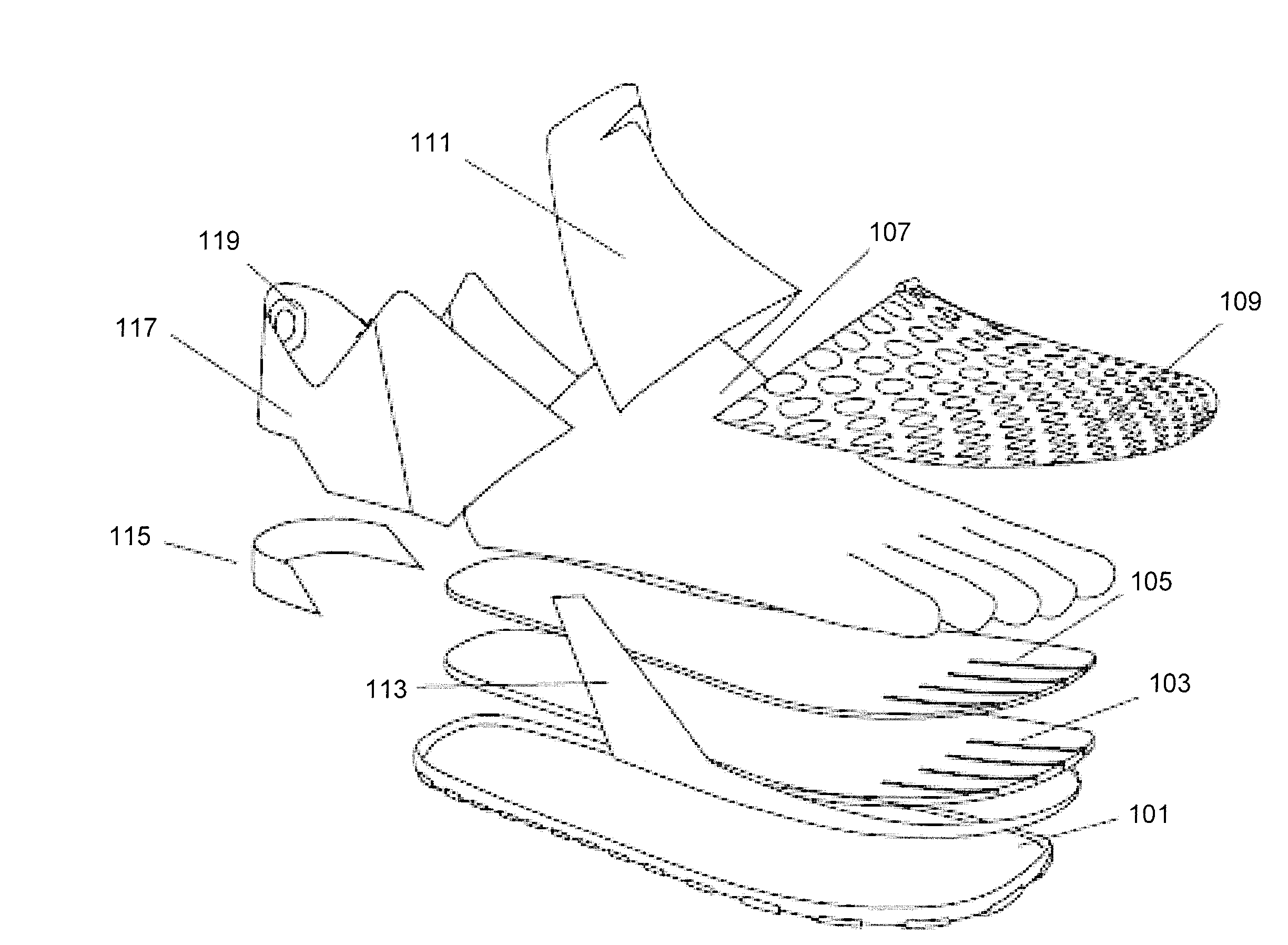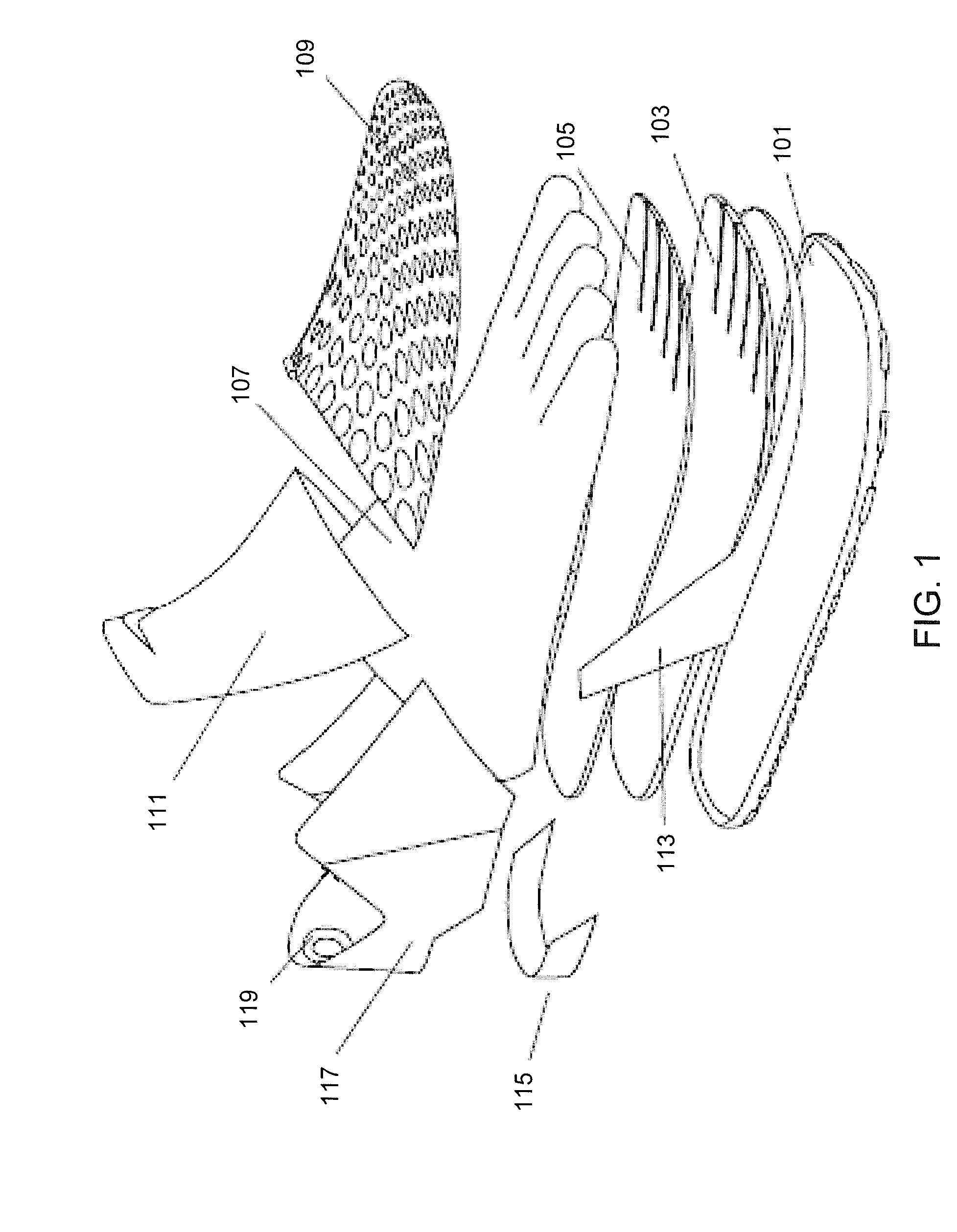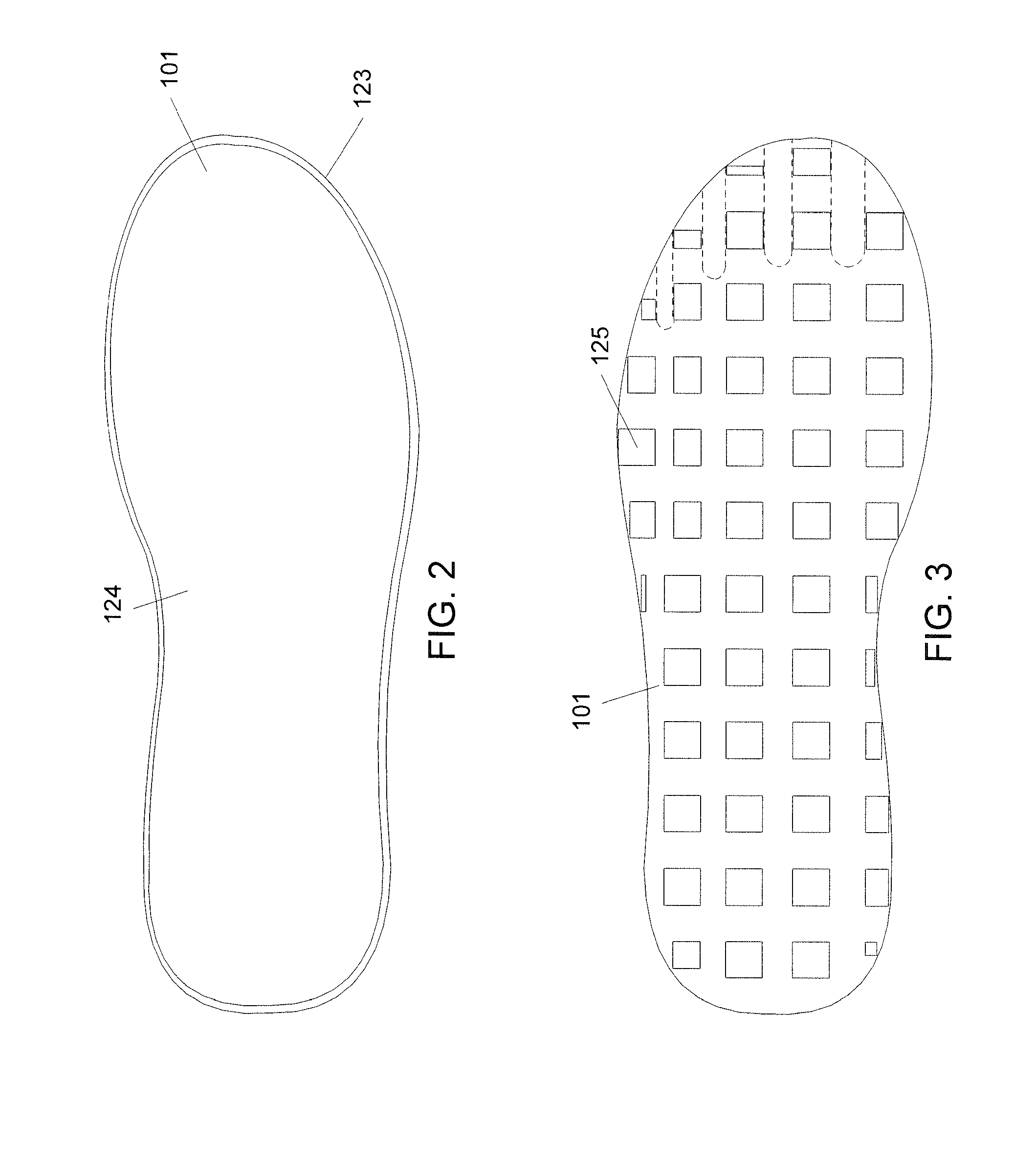Athletic performance shoes
a technology for athletic shoes and toes, applied in the direction of uppers, bootlegs, stiffners, etc., can solve the problems of achieve the effects of increasing the independent movement of toes, increasing functional improvement, and limited movement of individual toe sections
- Summary
- Abstract
- Description
- Claims
- Application Information
AI Technical Summary
Benefits of technology
Problems solved by technology
Method used
Image
Examples
Embodiment Construction
[0024]There is a growing adoption of “barefoot style” footwear primarily in running and outdoor sporting goods markets. The barefoot movement stems from a Stanford University track coach who advocated for his track athletes to train in bare feet because this would strengthen the athlete's feet. Bare foot style running shoes seek to be as minimal as possible. These minimalist designs allow the foot to more closely mimic the natural motion and to allow the foot to more aptly utilize all the muscles, tendons, and stabilizers present in the foot. This improves strength, balance, stability, and reactiveness of the athlete's feet. The feet being the foundation of a wide range of athletic movements, they are critical components to overall body health including knees, legs, back, posture, et cetera.
[0025]The inventive athletic footwear utilizes the principles of the bare foot movement in running, but adapt them to the specific requirements that athletes need for the athletic training and sp...
PUM
| Property | Measurement | Unit |
|---|---|---|
| weight percent | aaaaa | aaaaa |
| flexible | aaaaa | aaaaa |
| physical fitness | aaaaa | aaaaa |
Abstract
Description
Claims
Application Information
 Login to View More
Login to View More - R&D
- Intellectual Property
- Life Sciences
- Materials
- Tech Scout
- Unparalleled Data Quality
- Higher Quality Content
- 60% Fewer Hallucinations
Browse by: Latest US Patents, China's latest patents, Technical Efficacy Thesaurus, Application Domain, Technology Topic, Popular Technical Reports.
© 2025 PatSnap. All rights reserved.Legal|Privacy policy|Modern Slavery Act Transparency Statement|Sitemap|About US| Contact US: help@patsnap.com



